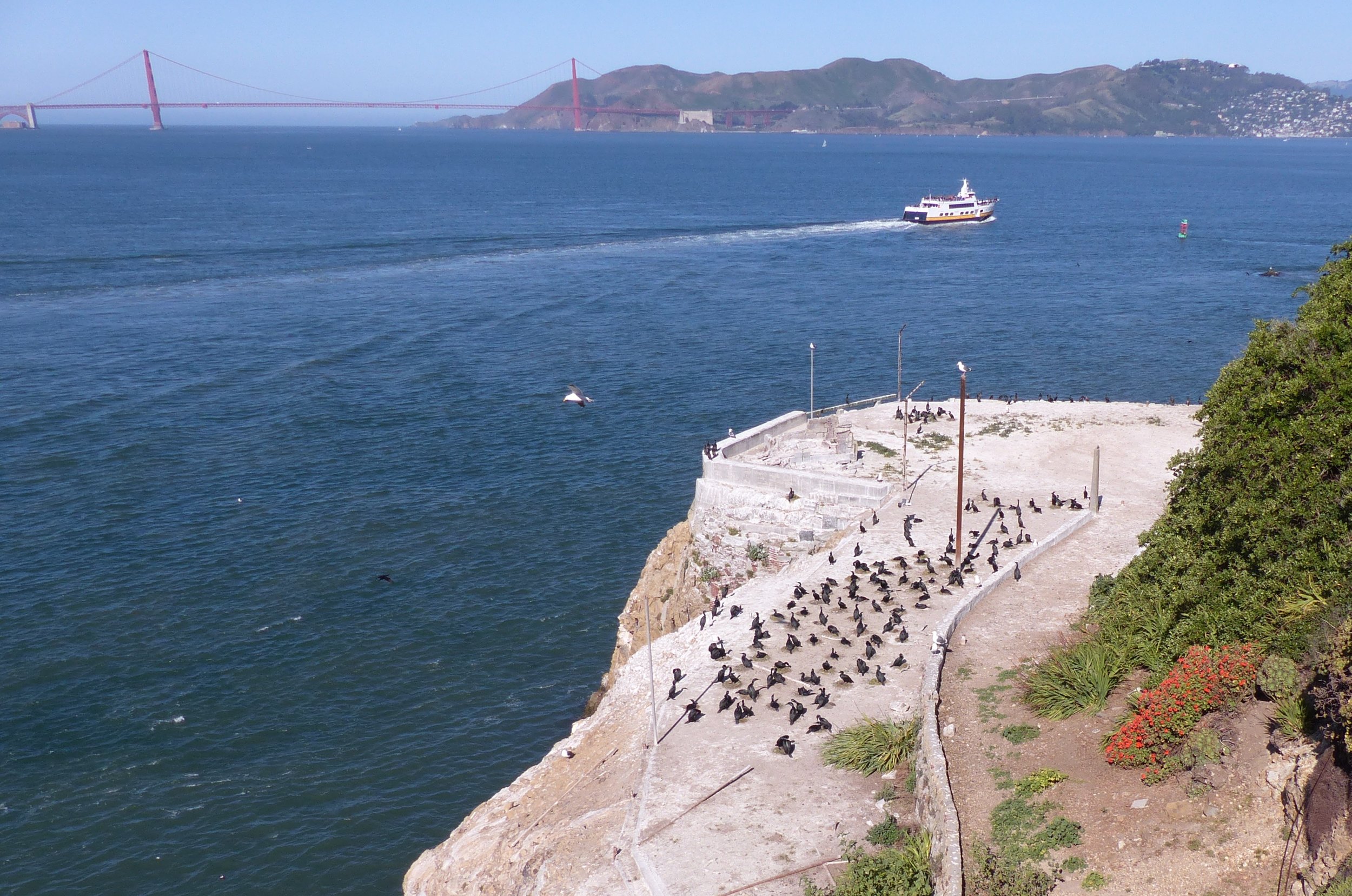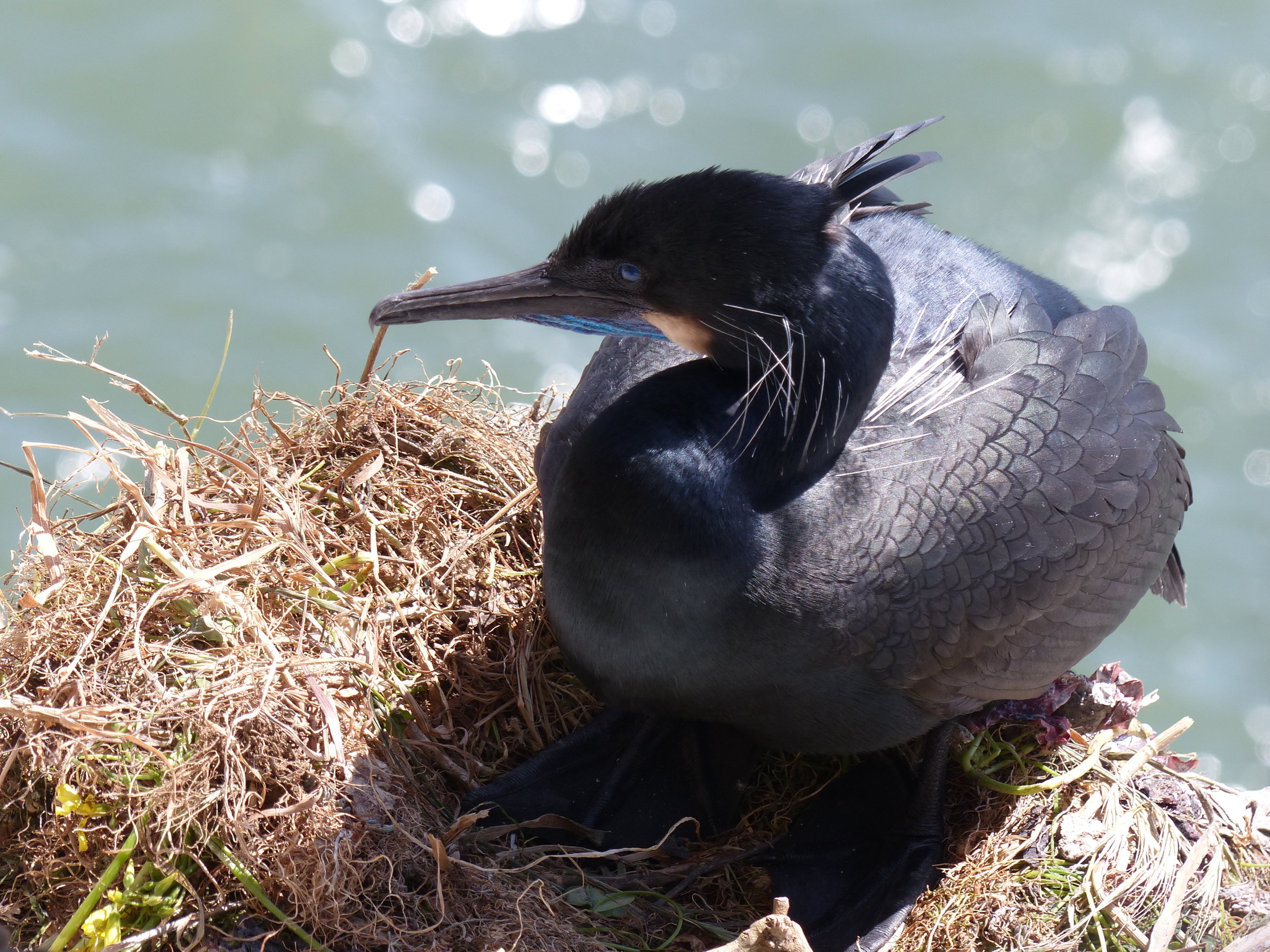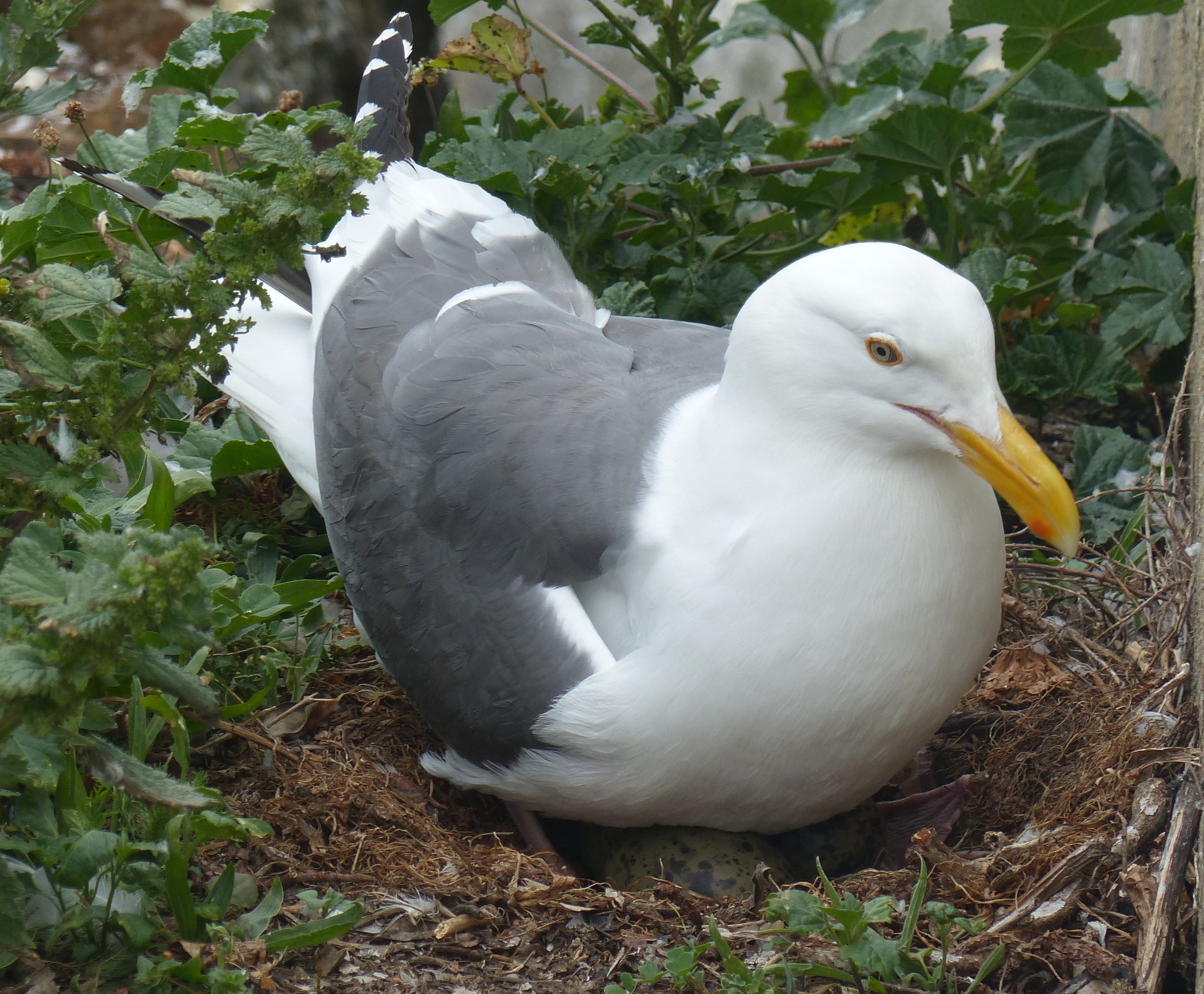Alcatraz Island
La Isla de los Alcatraces, "Island of Pelicans", dubbed by Juan Manuel de Ayala in 1775 for the abundance of Pelicaniforms and other seabirds, is a regionally important breeding site for marine birds on the West Coast of North America. In conjunction with the National Park Service Golden Gate National Recreation Area, we have studied the populations and productivity of seabirds on Alcatraz Island since the early 1990s. Potential disturbance to breeding birds is of concern because Alcatraz is the most heavily-visited tourist destination in northern California, with well over four million visitors annually. Moreover, given its proximity to San Francisco, various activities including firework displays and the America's Cup sailboat races may cause disturbance to the birds. Field studies focus on the breeding ecology of Brandt's cormorant and western gull.
This Brandt’s cormorant colony is just one of two estuarine colonies for this seabird (the other is the Columbia River estuary). We analyzed Brandt’s cormorant diet and found that northern anchovy are their main prey (Robinson et al. 2019). Primary anchovy habitat is nearshore and anchovy utilize estuaries such as San Francisco Bay as refugia during periods of poor ocean conditions (see Northern anchovy). Easy access to this high-energy prey likely helps explain why the Alcatraz cormorant colony consistently outperforms other regional colonies along the coast and out along the continental shelf break (i.e., Farallon Islands; Saenz et al. 2006).
Brandt’s cormorant diet also consists of demersal fish species such as sanddab, sole, and sculpin. The high diversity of demersal fishes in San Francisco Bay supports the success of the Alcatraz colony (see the Interagency Ecological Program (IEP) San Francisco Bay study).
We partner with the IEP to foster collaboration among organizations working on predation studies in San Francisco Bay (see IEP SFB Predation Working Group).
Data reports are available upon request.
Heather Robinson conducts the Alcatraz seabird research.








